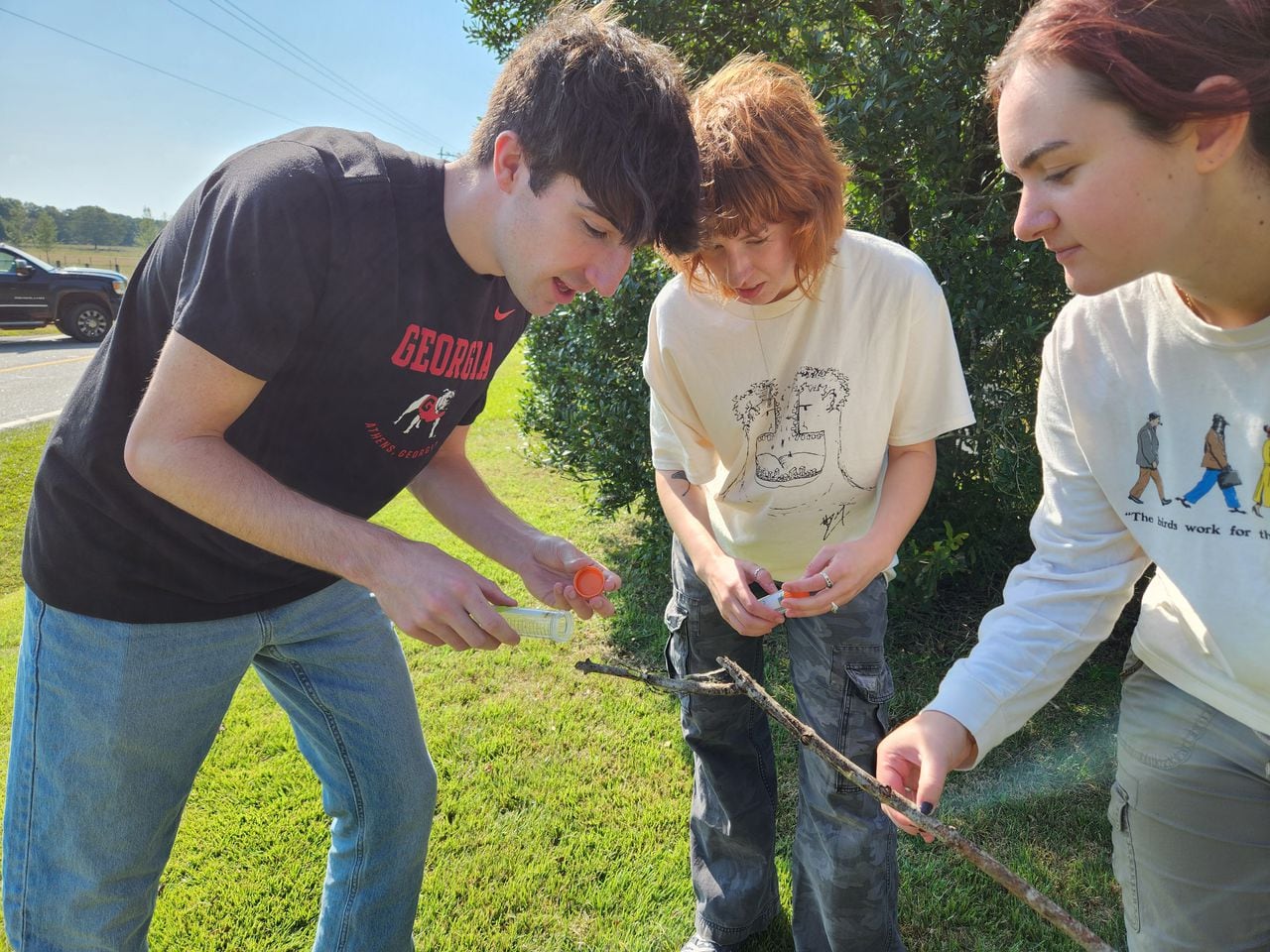Massive Joro spiders thrive in cities, new study shows
Power lines? Busy highways? Gas pumps?
None of those will stop the massive, invasive Joro spider from continuing its spread across the United States, according to researchers from the University of Georgia.
A new study published Tuesday in the journal Arthropoda, shows the huge, orb-weaving spiders are highly “urban-tolerant,” and have no trouble thriving in developed areas in spite of the ruckus we humans make in our daily lives.
Lead author Andy Davis, a PhD research scientist at the University of Georgia’s Odum School of Ecology, said the new study reinforces the idea that the Joros are here to stay, and that their spread in North America will continue.
“The findings from this study sort of are in line with the ongoing narrative about these spiders, that they’re going to be everywhere soon,” Davis said. “What we found sort of confirms that these spiders are okay being in places where there’s humans.”
Joros were first spotted in the United States in north Georgia in 2013, believed to have arrived via a shipping container from Asia. The spiders have spread since then across Georgia into Tennessee, the Carolinas, and with at least two sightings in Alabama, one in Jackson County and another in Calhoun County.
Brightly colored female Joro spiders can grow up to 8 inches long, and the spiders are known for making large, sometimes three-dimensional, tunnel-like webs to ensnare their prey.
And now, the new research shows that Joros can feed and maintain a healthy weight even in areas that would be challenging for many other spiders, like busy highways.
“Roadsides are just disturbed, stressful places, for an insect or a spider,” Davis said. “A lot of other species out there, whether it’s a bird or a butterfly, other researchers have found that those animals get stressed if they live next to roads.
“But for some reason, the Joro spiders are able to do it.”
For the latest study, Davis and undergraduate student researchers Kade Stewart, Caitlyn Phelan and Alexa Schultz, chose 20 roadways of varying traffic volume near the UGA campus in Athens, Ga. and see how well the Joros were adapting to noisy areas.
University of Georgia student researchers Kade Stewart, Alexa Schultz and Caitlin Phelan capture a Joro spider for a study on how well these spiders can tolerate urban environments.University of Georgia
Finding them was the easy part.
“They’re everywhere,” Schultz said. “We noticed along the roadsides, they build almost like apartment-style webs, where there’s like a big cluster of them.
“You’ll see them, for example, like along a power line, and you just look up and there’s a sky full of spiders.”
The student researchers then tested the spiders’ response to feeding, and whether the spiders would still come out to feed in spite of the din.
Since spiders use vibrations to tell when a prey item has entered its web, many kinds will avoid noisy areas like roadways. Not the Joro.
“We would tap the web with a tuning fork, which was meant to simulate a prey item flying into the web,” Stewart said. “And we would evaluate the response, whether the spiders attacked, did nothing, or retreated.”
After 357 such observations, the team found only a slight decrease in feeding response along busier highways compared to smaller roadways.
The team noted, however, that the spiders captured along the busier roadways weighed just as much as the others, indicating that the spiders were finding plenty of food.
“They do really well in urbanized areas,” Phelan said. “That’s pretty much what we’ve come to find out, that they just don’t really care. They’re very unbothered.”
In a previous study, Davis and another researcher showed that the Joros have a high metabolism and heart rate that may allow them to survive in colder climates than many American orb weavers. Add to that the Joro’s ability to live in urban areas, and the spread up the Eastern Seaboard seems inevitable.
“One thing that we know for sure is that these spiders aren’t going anywhere,” Davis said. “There’s millions of them now in the landscape, and they are prolific right now.”
Fortunately, Davis’ research has also shown that Joros have a relatively shy demeanor. Spiders hit with a puff of air from a turkey baster remained frozen in place for up to an hour, likely a defense mechanism in response to a perceived threat.
Joros are technically venomous, but their tiny jaws make it very unlikely they could bite through a human’s skin. As an invasive species, the Joro doesn’t have any natural predators to keep them in check, and is spreading rapidly.
“There doesn’t seem to be much predation on them, and based on our previous work, we know that they’re probably going to be spreading throughout most of the country, and even into Canada,” Davis said. “And so they’re going to be everywhere. It’s just a matter of time.”
